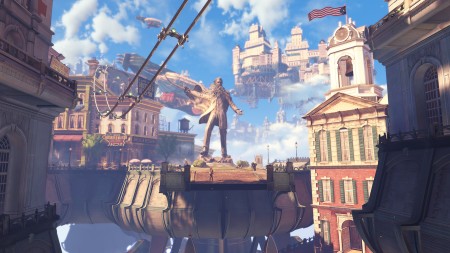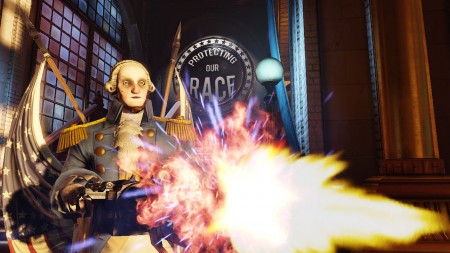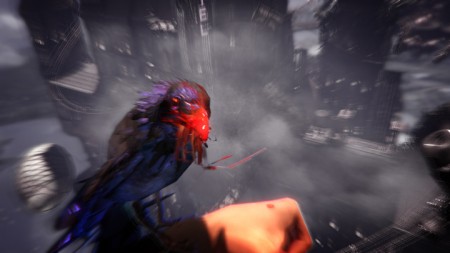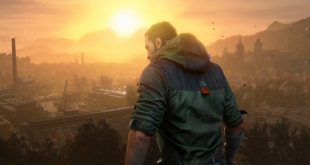One of the greatest shooter franchises in gaming returns with a sequel that’s complex, intelligent and beautifully realized.
I don’t think there are too many people that would argue that Ken Levine and Irrational Games’ BioShock series has become one of the marquee franchises in modern gaming. Both BioShock and BioShock 2 set the bar for video games, period. Yes, they’re shooters, but they evolved the genre in much the same way that Valve’s incredible Half Life series has.
BioShock Infinite continues this trend and grows on it in ways that the first two games in the series didn’t. ‘Series’ might actually be a strong word when referring to BioShock on the whole, by the way. While the opening two games were most definitely taking place in the same world, Infinite is a very different animal.
Before I go any further, I’d like to place a little warning here. This is going to be a fairly spoiler-free review (mainly because I hate it when things are spoiled for me, so I wouldn’t do it to you), but there are going to be some things that I can’t really avoid talking about and they could probably be considered mildly spoilery- so you’ve been warned.
 Infinite takes place on the floating city of Columbia. It’s a world where science, religion, and government mingle freely and have almost fused into a single entity. There’s a strong commentary on all of the above that flows through every nook and cranny of Infinite. It’s expertly done and thought provoking right up till the end; not that anyone should be surprised to hear that.
Infinite takes place on the floating city of Columbia. It’s a world where science, religion, and government mingle freely and have almost fused into a single entity. There’s a strong commentary on all of the above that flows through every nook and cranny of Infinite. It’s expertly done and thought provoking right up till the end; not that anyone should be surprised to hear that.
Creator Ken Levine doesn’t exactly shy away from this kind of stuff, as is evident from his “no gods or kings” and ‘chains of industry’ themes from the original two BioShock games that borrowed on the thoughts of author Ayn Rand. It’s very mature content (and I don’t mean in a blood and guts or nudity kind of way) and it’s both welcome and needed in the gaming world if the art form (yep, I said it) is to keep on growing and changing.
Again, I don’t want to get too deep into the story, but there are some things that I need to cover here. Main character Booker DeWitt is a down on his luck labor enforcer and Private Eye operating in New York City, but there’s a lot more to him than that. He’s also a war hero with more skeletons in the closet than he’d like (some he doesn’t even remember- and that’s as far as I’m going to go on that) and has become indebted to some very bad folk.
At the top of the game, Booker is offered a deal- go to Columbia and bring back a young girl named Elizabeth. Just hand the girl over to ‘them’, and the debt will be washed away. Of course, Booker doesn’t know that Columbia is a floating city or that there are things about it (and him) that will take him on a roller-coaster ride loaded with mind-bending twists and turns… but what fun would it be if he did?

And no, there’s no undersea world (well…) or Big Daddies and Little Sisters, but there are some links and some definite parallels to the BioShock you knew. I’m not going to spoil it for you though, so that’s just about all I’ll do in terms of story-talk. This is a game that genuinely needs to be experienced and played to be enjoyed. If you haven’t played Infinite yet and want to, then I urge you not to seek out any story points- just play it. I think you’ll be glad you did.
What I will talk about though are the graphics and sound. Both are home-runs and so well done that you might just think you’re playing a next generation title at times.
To put it mildly, the design of Columbia is stunning and Irrational has crafted a world that is both easily identifiable as the early 1900’s and futuristic. Shops, people’s homes (both inside and out) and the cityscape itself is beautifully designed with a huge range of colors and lighting effects.
From the start of the game to its finish, you’ll watch as Columbia changes from what seems to be a paradise into… something quite different. The alterations and the varying stages of change that Irrational achieved with the graphics is truly something to behold. And Infinite hasn’t neglected the audio department either as the graphical splendor is supplemented and enhanced by some pretty awesome sound and music.
Booker and Elizabeth are voiced by Troy Baker and Courtnee Draper respectively and both do an excellent job with the characters. You could pretty much say the same for all the actors in BioShock Infinite though as the cast is spot on and enjoyable throughout. In fact, one of the (many) high-points of the game is listening to the vocal work and taking in the interaction between the well written and well acted characters.

The music plays into the story in interesting ways too. As the tale progresses, you’ll get some audio clues to what’s actually happening in the game that may just strike you as odd at first, but makes a good deal more sense when you reach the story’s zenith.
Reaching that zenith, by the way, is a joy thanks to Infinite’s excellent play control. The gunplay and (particularly vicious) melee attacks are easy and fluid to perform on the swarms of enemies (of which there are some amazingly inventive and imaginative types) .
Most of the weaponry in the game is well thought out and great for specific situations too. Although there were a few guns that I thought were outshown by Vigors (more on that in a sec) of similar design, the good majority of then were great fun to use and upgrade at Columbia’s vending machines. You can only carry two at once, but most of the time that’s all you’ll need. I almost exclusively used the machine gun and the hand cannon, just for the record.

Now, about those Vigors… If you’ve played BioShock in the past then you know exactly what they are because they’re pretty much the Plasmids from those two titles. If you haven’t played them, then the best way to describe Vigors are to say that they’re basically superpowers in a bottle.
They range from overtly offensive stuff like Devil’s Kiss (chuck some fireballs) to more passive powers like Return to Sender (magnetic shield), but they’re all pretty useful and compliment the game’s more traditional firearms beautifully. Each Vigor can be upgraded (like the hardware above) and has a secondary effect as well, like Shock Jockey’s electrified trap, that gives them a little more variety. Vigors don’t play nearly as important a part in the story of Infinite as the Plasmids did in BioShock 1 & 2, but they’re still undeniably cool and add a good deal to the gameplay of what would otherwise be some pretty standard (if very well done) first-person shooting.
Final Thoughts
Have you ever watched an entire TV series straight through on DVD or Blu Ray? That’s how I felt when I finished up with BioShock Infinite. I sat, post credits, for a few minutes and just let everything sink in. There’s so much content and such a massive amount of ‘stuff’ happening in the game that it can almost be too much to take in at once. Almost.
Sure the gameplay is all about the action, but there are some heady concepts taken on (much like with the previous games in the series) and there are a plethora of jaw-dropping, shock moments that make BioShock Infinite an extremely impactful play. It’s actually pretty hard not to talk about the game’s story points and spill the beans on any number of developments that you’ll cross on your way to the ‘goal line’, but this is a game that’s so worthy of your time and effort to play all the way through that it’d almost be a crime to blow even the smallest part of the story for you.
Go play it, you’ll be glad you did. Oh, and stay past the credits. Trust me on that.
More please Mr. Levine.
 BrutalGamer Bringing you Brutally Honest feedback from today's entertainment industry.
BrutalGamer Bringing you Brutally Honest feedback from today's entertainment industry.






